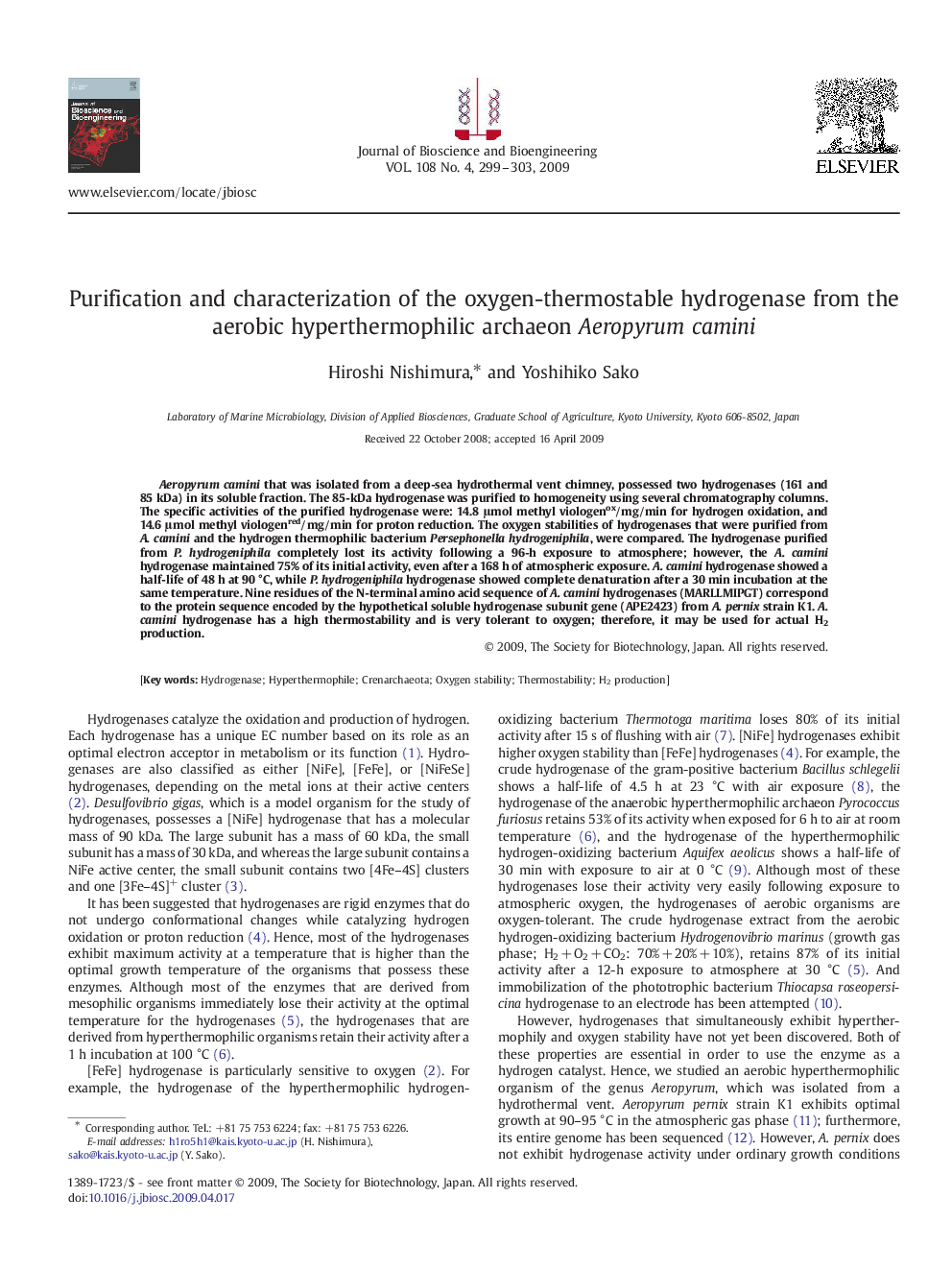| Article ID | Journal | Published Year | Pages | File Type |
|---|---|---|---|---|
| 21690 | Journal of Bioscience and Bioengineering | 2009 | 5 Pages |
Aeropyrum camini that was isolated from a deep-sea hydrothermal vent chimney, possessed two hydrogenases (161 and 85 kDa) in its soluble fraction. The 85-kDa hydrogenase was purified to homogeneity using several chromatography columns. The specific activities of the purified hydrogenase were: 14.8 μmol methyl viologenox/mg/min for hydrogen oxidation, and 14.6 μmol methyl viologenred/mg/min for proton reduction. The oxygen stabilities of hydrogenases that were purified from A. camini and the hydrogen thermophilic bacterium Persephonella hydrogeniphila, were compared. The hydrogenase purified from P. hydrogeniphila completely lost its activity following a 96-h exposure to atmosphere; however, the A. camini hydrogenase maintained 75% of its initial activity, even after a 168 h of atmospheric exposure. A. camini hydrogenase showed a half-life of 48 h at 90 °C, while P. hydrogeniphila hydrogenase showed complete denaturation after a 30 min incubation at the same temperature. Nine residues of the N-terminal amino acid sequence of A. camini hydrogenases (MARLLMIPGT) correspond to the protein sequence encoded by the hypothetical soluble hydrogenase subunit gene (APE2423) from A. pernix strain K1. A. camini hydrogenase has a high thermostability and is very tolerant to oxygen; therefore, it may be used for actual H2 production.
